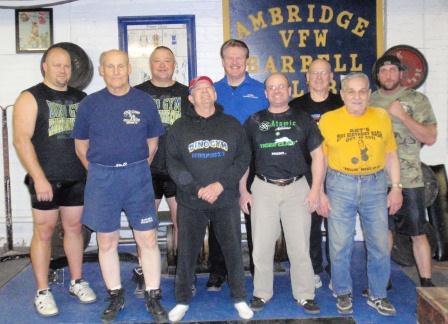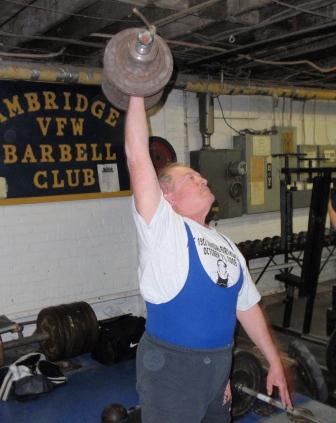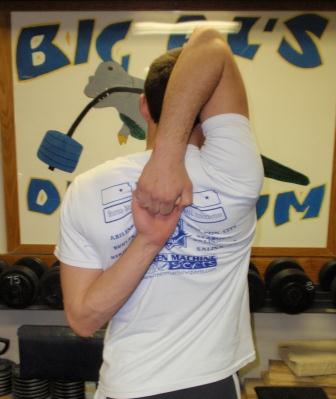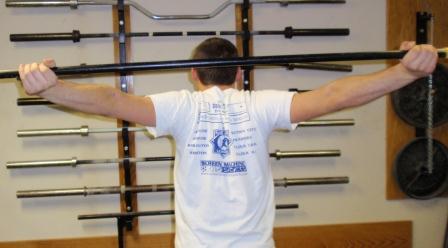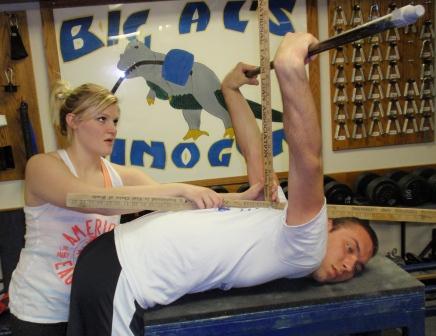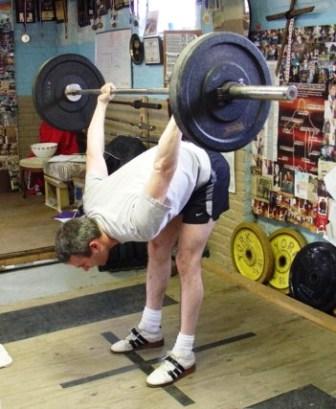Divisions, Awards & Records
by Al Myers
The other day I wrote a blog about the USAWA scoring system, and how using it is an “unwritten policy” of the USAWA because it is not detailed in the Rulebook but is the common way the USAWA has ALWAYS scored meets. Today I’m going to cover another topic that has several “unwritten policies” that applies to divisions, awards, and records. I know there has been some confusion on this because lately I have received a few emails asking questions on it. I will make references to the USAWA Rulebook whenever possible, but “lots of stuff” is not outlined in the Rulebook with specific details. Instead, it is just “common knowledge” amongst experienced USAWA members. I will also “throw in” a few opinions of my own in this story as it relates to these matters.
First, the USAWA recognizes four main age groups with subdivisions. This comes straight from the Rulebook:
II. 3. The USAWA will recognize four main age groups:
- Junior – This includes lifters who have not reached their 20th birthday. Junior age groups may be further split into smaller age groups. These include 13 and under, 14-15, 16-17, and 18-19.
- Senior – This includes lifters who have reached their 20th birthday, but have not reached their 40th birthday.
- Open – This includes lifters who are 20 years of age or older.
- Master – This includes lifters who are 40 years of age or older. Master age groups may be further split into smaller age groups. These include 40-44, 45-49, 50-54, and will continue each 5 years to infinity.
These are the age groups which MAY be offered in any USAWA competitions. No where in the Rulebook does it say a meet director MUST offer each of these age group (and subdivisions). In fact, most USAWA competitions do not offer ANY of these age group categories in meets. Small meets competitors just typically compete against everyone, with the ranking determined by the Scoring System which I outlined the other day. However at big competitions (like the USAWA National Championship) these age groups may be offered because awards are given for BEST LIFTERS within these different groupings. That is really the only reason age groupings are included at meets – for the awards. It is silly to advertise age groupings if it doesn’t mean anything, ie offering age group categories but NOT giving out awards in them. By now, some have noticed that the 2012 National Championships is offering these age groupings: Junior, Senior, and Master for both Men and Women. Our Rulebook clearly spells out that Men and Women have seperate divisions:
II. 1. Competitions are to be organized for both men and women.
You will notice that the OPEN age group is not included at Nationals this year. This age grouping has been included at times in the past at Nationals. Now is the time for me to “get on my soapbox” during this story and explain my views on why I’m NOT OFFERING the open division. First of all, of ALL these four age groupings, there is only one that is redundant (already represented in other age groupings) and THAT is the open age group. The “open” age group is solely the combination of the Senior age group and the Master age group. This is where the problem arises. By having the open age group for awards (in place of the Senior Age Group), it allows lifters in the Masters age group to win their Master Awards as well as the open awards, thus “taking awards away” from those lifters in the Senior 20-39 age group. I call this DOUBLE DIPPING. Of course, the Master lifters lose their age percent adjustment to do this, but STILL CAN win these awards. Offering the Senior Age Group (instead of an open age group) for awards eliminates the possibility of this happening. Now – I know what several of you are saying right now! And that is” if a Master is good enough without their age point bonus they SHOULD win these awards!” After all – being an “old guy” shouldn’t be an advantage – Right???? Well, I can tell you that this is making the assumption that age is NOT an advantage. I know I am better in several of the all round lifts now at the age of 45 than I was at the age of 35, because I have had the many years experience of learning the correct way of performing the lifts. Am I stronger now? No – but I’m just “better” at some of the difficult all round lifts because I have had more years of practice time. So I would argue that lifters of Master Age MIGHT at times have an advantage over novice Senior lifters – thus why the Senior Age Group should be recognized by itself. Every other age group is recognized by itself – why should lifters in the 20-39 age group be discriminated against???
The USAWA is not like most other lifting organizations. We are not a “for profit” business and NO ONE makes a profit from putting on a meet. Our meet promoters are NOT professional meet promoters. I know a few PL meet promoters who make their living “running meets”, and like any business, need to make money to continue. I sure don’t fault them for this. But in the USAWA if a meet director “breaks even” on meets that is the norm. I have been to powerlifting meets in the past where one could enter multiple divisions if they wanted to. I never did this because I thought it was foolish. It is just a “marketing ploy” on the meet directors part to “up sale the entries” for more profit. After all, it makes perfect business sense to allow one lifter to pay several entry fees so they could win lots of awards. Add in American Records for each of these divisions and then you really “sweeten the pot” to sucker more lifters in with this sales pitch. I’ve seen lifters walk out of these meets carrying more weight in awards than their max squat and “bragging” on the 12 American Records they just set over the course of the 6 divisions they entered!!! Who do they think they are kidding here? But the lifters are happy with their boughten fame and the meet directors smiling with his fat pockets.
I’m glad the USAWA doesn’t operate like that. A meet director should charge what is needed to finance a meet with one entry fee per lifter and not rely on “tricking” the lifters into more fees. Also, no one is “buying” a record in a special division in the USAWA. If you enter a meet and set a record – YOU SET A RECORD! No where in the Rulebook does it say you must be “entered” in that division or age group (and have paid an entry fee for it) to set a record in that division. Lifters have set overall (or open) records in the past without ever being officially entered in these divisions. That’s the precident which has been set long before now. This comes AGAIN straight from the Rulebook:
V. 8. Records will be kept for men and women in all weight classes within subgroups of the Junior and Master age groups. Overall records will be kept for men and women in all weight classes, and will include all age groups.
Now I’m not saying that is how the records are being kept now -but this line in the Rulebook CLEARLY outlines how the records SHOULD be kept. It does not say “open records” are kept, but that OVERALL records are kept. This means the OVERALL best record within all age groupings – Junior, Senior and Master. Think of it as the ULTIMATE weight class record, because it is the BEST ever done in the weight class, of all ages. And I’ll say it again – you DO NOT have to pay a special fee at a meet to get this record!
As you can tell I am not in favor of the open age group. From now on any meet I’m promoting WILL NOT include this age grouping. Of course, if other meet promoters want to have it in their meet that is their right. The USAWA will not tell you what awards to give out – that’s your job as the meet promoter. But don’t count on me entering your open age group (in addition to the Masters) to give you a few extra dollars! I’ll always think that’s a scam as well as unfair to the Senior Age Class lifters.
I welcome any rebuttals to to my opinions on this subject.
